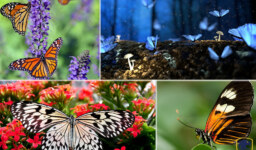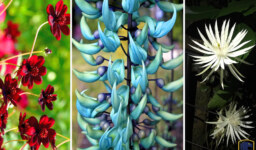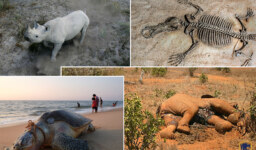Nature is an amazing creator that has the magical ability to create different kinds of species. In the first part of this article we talked about how riverine aquatic insects derivate their respiration and locomotion methods according to their mode of life. If you missed the first article click here to read that article.
Feeding
Every living species in nature should obtain nutrition to live and grow. Aquatic insects can be divided into four groups based on the food materials and method of consumption.
Shredders – These creatures consume wooden materials and tree leaves in the form of coarse particle organic matter (CPOM) or suck juices from the stem. Aquatic caterpillars live inside stems and receive food and shelter until they thrive as adults.
Scrapers- scrapers have been adopted to scrape or graze the biofilm from the surfaces. Most of them are Mollusks, not insects.
Collectors- These insects gather or filter fine particulate organic matter and ultra-fine particulate organic matter using their special structures. The appendages of the Black Fly larvae have formed into a comb-like structure to facilitate them in filtering food from flowing water. Deploy nets are used by caddisflies and Chironomids to snare food particles.
Predators: Predators are carnivorous species that depend on other invertebrates or fish for nutrition. The majority of the aquatic insects are predators. Predators can be divided into two categories depending on how they capture their prey. Some are ambush hunters others chase their prey.

Adaptations of riverine aquatic insects for their mode of life part 2 (Animals & Nature)
-
Ambush hunters
Ambush hunters in nature show camouflage adaptations. They stay still until the prey is close enough and then capture it
-
Chasing hunters
These insects chase their prey and capture it. To do that they show natural structural adaptations such as special moth parts.
Ex: Giant Water Bugs– piercing-sucking mouthparts
Predaceous Diving Beetles- powerful sharp jaws with sharp teeth
larvae of all dragonflies and damselfly has a modified lower lip to hunt. They have a special feature called labium folded under the jaw. Labium can be shot fast forward to grab the prey when the prey is closer enough. These creatures either hunt ambush or chase the prey.
The water strider is sensitive to the vibration of the water surface. It takes advantage of this special ability to locate prey fallen onto the water surface. It has a sharp beak to stab the prey and suck the juice out.
Defense
When living in an natural organism that has predators it is important to have adaptations in order to be safe.
Structural adaptations
- Some riverine aquatic insects in nature have structural adaptations such as camouflaging with dull colors, speckles, stripes, and hairs. The dense Hair cover of Forest flies (stoneflies) and dragonflies help them to shape a biofilm in cooperation with fine particles to camouflage with the surroundings.
- Another structural adaptation that the insects in aquatic environments show is that, secreting nasty tasting chemicals. That method can protect aquatic insects from larger predators. For instance, whirligig Beetles’ distasteful chemical that secretes when in a predator’s mouth, makes the predator spit them out.
Behavioral adaptations
Furthermore, these aquatic insects show behavioral adaptions for protection. Such as being active in dark and having swift escape responses.
- Swift escape responses help insects like mosquitoes to fly away rapidly in case of an emergency.
- Also, Giant water bugs bite predators back in order to defend themselves. Due to this adaption, these insects have been titled “toe biters”.
Adaptations to seasonal changes.
When living in an aquatic environment the effect caused by seasonal changes is a crucial problem. Especially insects who are living in the areas where seasonal changes occur have to develop features to be resilient to cold and droughts.
Drowning in Mud
In the summer seasons in the areas where droughts occur aquatic insects face the obstacle of drying up streams and losing their habitats. In these kinds of instances, aquatic insects drown in the mud and live there till a proper season comes.

Adaptations of riverine aquatic insects for their mode of life part 2 (Animals & Nature)
Living in the water under the ice layer
In the winter season, these aquatic insects require adaptations to survive low temperatures. One method is to live in the water under the ice layer which contains the highest temperature when everywhere is frozen. The insect larvae can thrive in the water below the ice.
manufacturing cryoprotectants
Another option that some aquatic insects in nature use in order to survive in the winter is manufacturing cryoprotectants and types of antifreeze. These help them to maintain their body fluids in temperatures that are lower than the freezing point of water. These insects can be hibernated and frozen into the ice while their cells are functioning. Larvae living in the aquatic environments in the Arctic can survive when the temperature drops -20°C – (- 30 °C). When the temperature of the environment rises and ice melts these insects come back to life.
Ex: Nemoura Arctica stoneflies (Forestflies)
winter cocoons
Furthermore, some aquatic insects create winter cocoons to protect themselves from the ice. These cocoons are able to protect insects from extreme temperatures and give mechanical protection to prevent the difficulties caused by overwintering, ice, and snow.
Ex: larvae of Chironomids
Metamorphosis
Transforming through different physical phases in the life cycle is called metamorphosis. This facilitates aquatic insects to adapt to changing seasonal conditions. The life cycle of many aquatic insects happens in both terrestrial and aquatic environments. There are two types of metamorphosis.
- Complete metamorphosis
- Transform eventually from eggs → larvae → pupae →
Ex: mosquito – takes about a month to complete the life cycle.
- Incomplete metamorphosis
- Transform through egg→ larval → nymph stages →
Ex: Dragonflies
Damselflies
Mayflies
True bugs
Metamorphosis helps to reduce competition among insect organisms in nature and survive in difficult seasons and reproduce in large numbers in the offspring.
To sum up everything aquatic insects have special respiration features to breathe and show adaptations to locomote in such an environment. They have structural and behavioral adaptations to find and consume food. Not only do they contain adaptations to protect themselves against predators but survive in difficult seasons. Overall, we can state that riverine aquatic insects have successfully adapted to the riverine aquatic environment.




